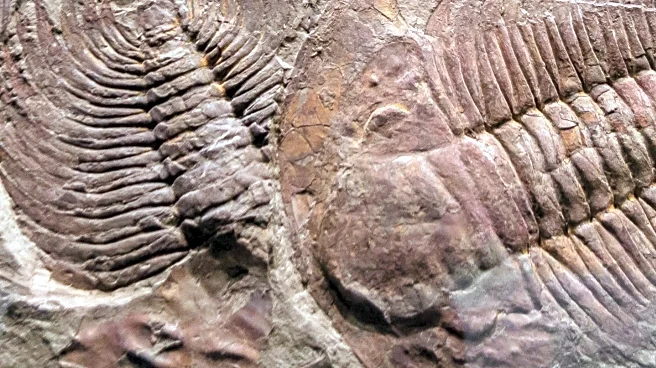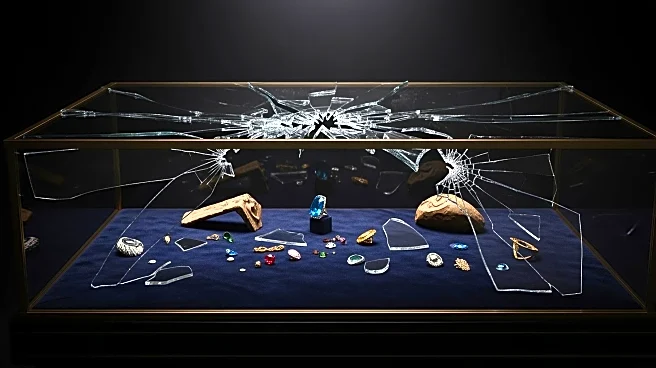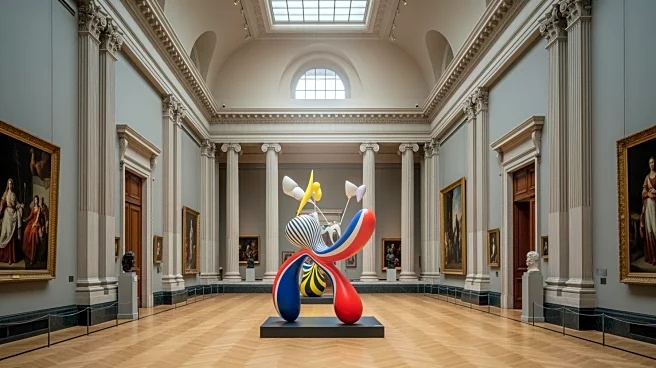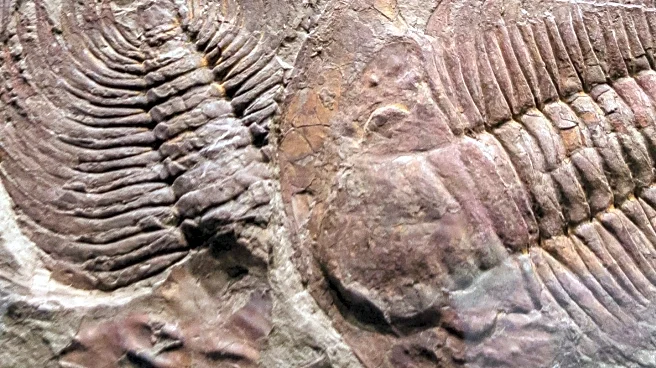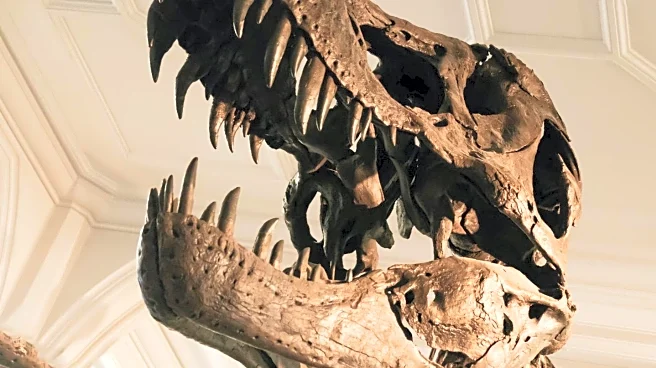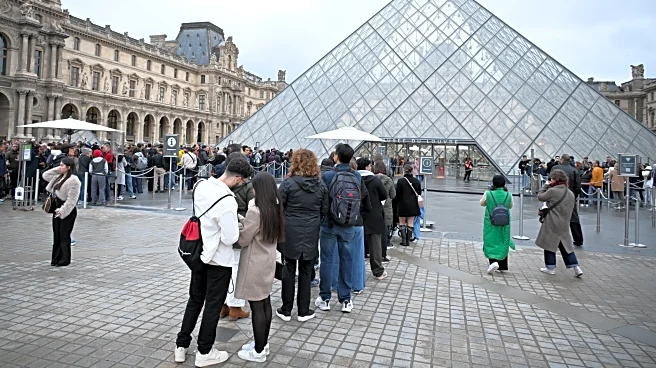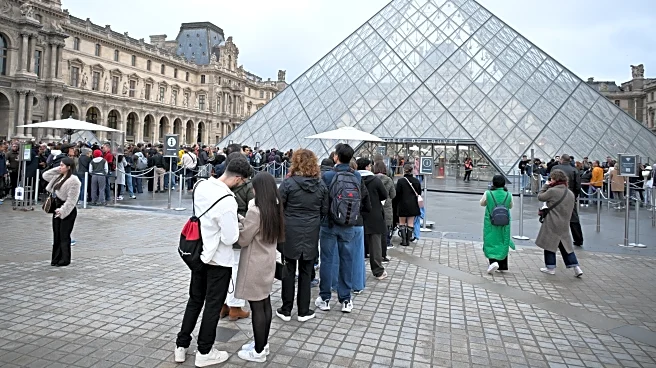What's Happening?
The Swindon Museum and Art Gallery has acquired the fossilized vertebra of the first stegosaur ever scientifically discovered, which will be featured in a new temporary exhibition. The fossil, originally
found in Swindon in the 1800s, is part of an exhibition focused on Swindon's Jurassic period, showcasing marine creatures and a 'sea monster.' Elaine Arthurs, curator of the exhibition, highlighted the rich fossil history beneath Swindon, which was a popular site for Victorian fossil hunters. The stegosaur fossil was discovered in the 1870s and most of its remains are displayed at the Natural History Museum in London. The exhibition, titled 'Fossils Hunters: Unlocking Swindon's Jurassic Past,' will run until April 11, 2026.
Why It's Important?
The exhibition provides valuable insights into the prehistoric era, particularly the Jurassic period, and highlights Swindon's significance in paleontological history. By showcasing the first identified stegosaur fossil, the museum offers educational opportunities for visitors to learn about the evolution of life and the environmental conditions of the time. This event underscores the importance of preserving and studying fossils to understand Earth's history and the development of life forms. It also emphasizes the role of local museums in promoting scientific knowledge and cultural heritage.
What's Next?
The exhibition will continue to attract visitors interested in paleontology and natural history until its conclusion in April 2026. The museum may explore further collaborations with other institutions to expand its collection and offer more comprehensive displays. Additionally, the exhibition could inspire future research and discoveries in the field of paleontology, encouraging local and international interest in Swindon's fossil heritage.
Beyond the Headlines
The exhibition raises questions about the preservation and ethical acquisition of fossils, as well as the impact of historical fossil hunting practices on modern scientific research. It also highlights the cultural significance of fossils in understanding human history and the natural world, potentially influencing educational curricula and public interest in science.
